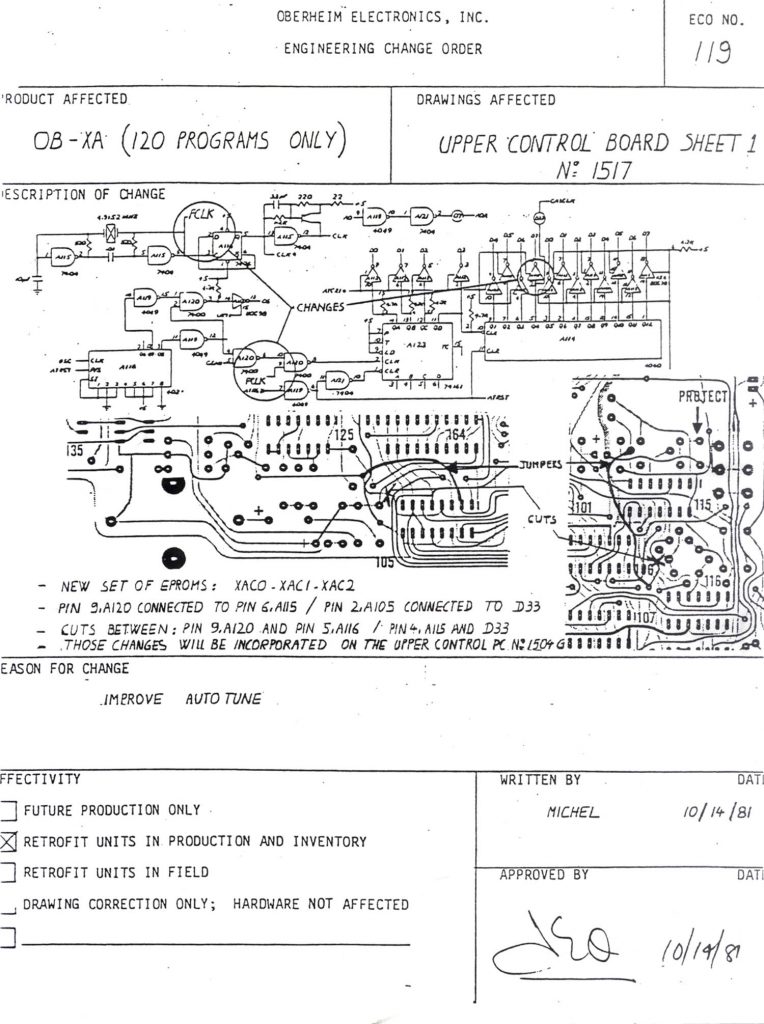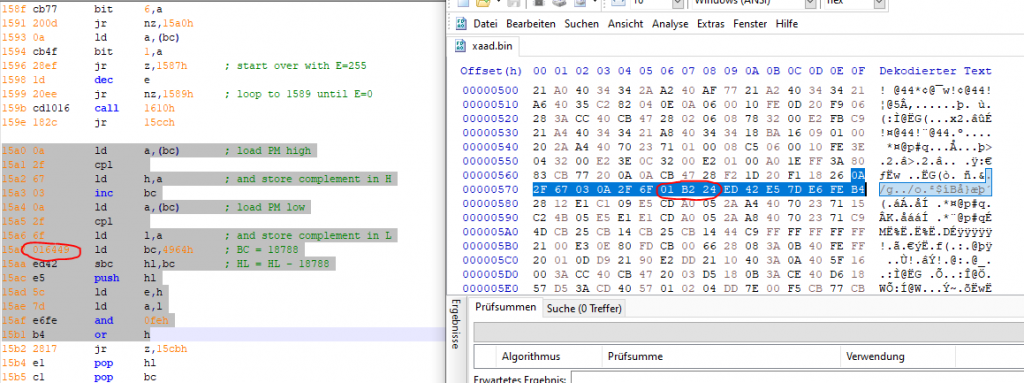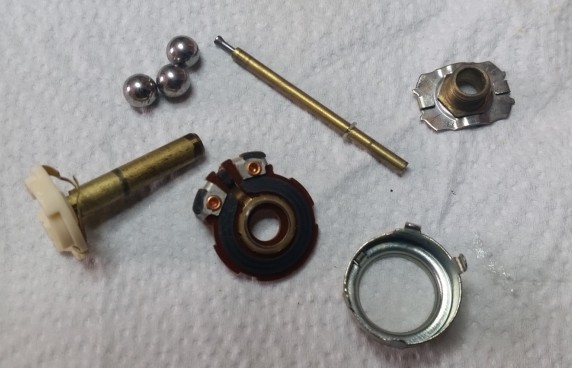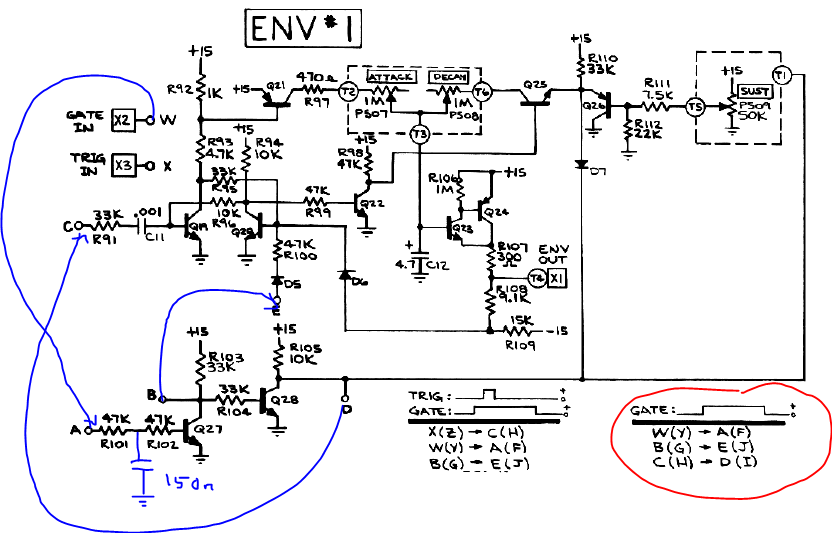Recently a half repaired OB-Xa hit the workshop. The main trouble was complete failure to auto tune. After fixing some obvious faults (damaged vias, poor quality trimpots) the auto tune issue remained. Although the serial number indicated “old” auto-tune the program LED advanced during auto tune, so the firmware has been upgraded to a revision C already.
Until now I have always ignored that the service manual does say that the Revision C software has a new auto-tune circuit – so I had to learn it the hard way. I measured the gate time of the period meter circuit (which is around 3.82ms for a well tuned VCO, 4 periodes of a high C at 1046,5Hz), measured the clock frequency which is half the crystal clock or 2.4576 MHz. This gives a period count of around 9400.
Now I disassembled the firmware and saw that the target count is not in the 9400 range, but twice of that – 18,788 ! I verified my assumptions by feeding a 523Hz clock from a DDS generator which instantly let auto-tune pass.
During this, I also used the great “XACA2” patch EPROM from Ricard Wanderlöf (read here http://butoba.net/homepage/synthhacks.html). We had an email chat for some days trying to evaluate what is happening and came to the conclusion that all out assumptions must be right and that there must be a hardware change as well.
But first my comparison between the XAAD firmware (the last of Revision A) and the XACA disassembly:
While the Revision C compares the period count with 18,788, the old revisions indeed had a target value half as high!
So the only solution to this can be that the period meter is clocked from the full crystal frequency of 4.9152 MHz for Revision C and higher. Half an hour(!) I made this conclusion I found the ECO #119 which explained how to change the upper board for use with the Revision C firmware.
Some times we learn it the hard way. Lots of techs I asked during the process weren’t aware of the hardware modification – or just forgot about it, 40 years later…
Interesting enough: the original schematics of the later mainboard type for the Revision F and G firmware still show the period meter clocked by 2.4576MHz, while the target value in the firmware remains at 18,788. So this must be an error in the diagram, probably not the only one.
Here’s the ECO #119:






